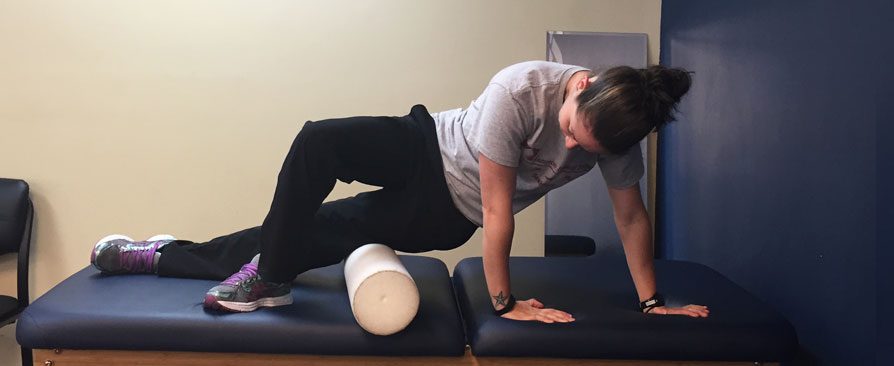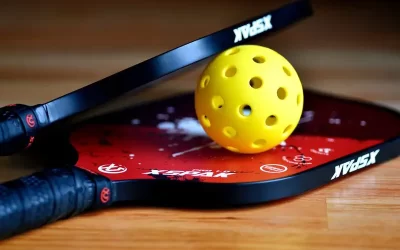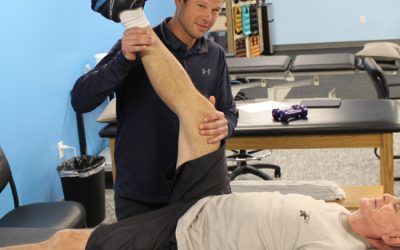by Katherine Younes, DPT – Hampton Clinic
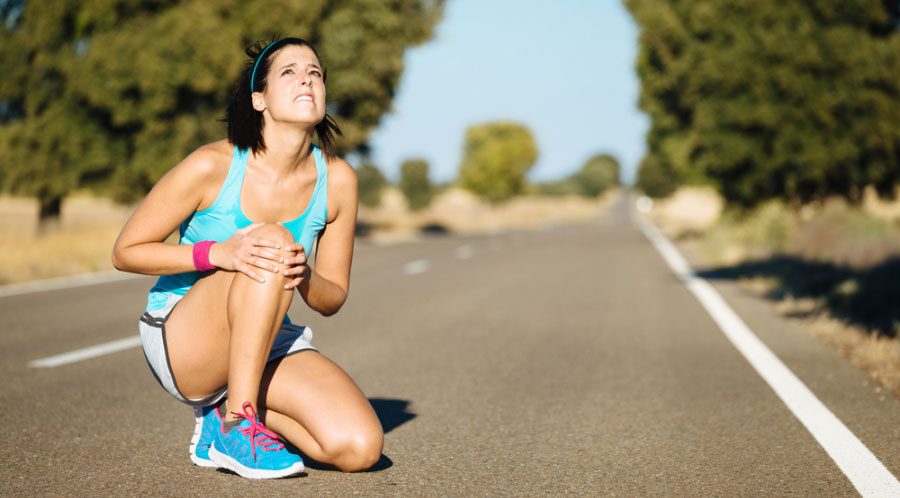
As the fall approaches, many of you may be signing up for a 5k, 10k, or you may be an everyday runner. As many of you know, with running may come aches and pains. The most common overuse injury in runners is Iliotibial Band Syndrome.
What is Iliotibial Band Syndrome?
ITBS accounts for 12-14% of all overuse injuries in runners. The IT band consists of a thick, tight band of fascia located on the lateral aspect of the thigh. The IT band spans from the outside of the pelvis, runs over the lateral hip, and inserts into the lateral femoral condyle located just below the lateral knee. The continuous rubbing of the band over the boney prominences on the femur, combined with repetitive flexion and extension of the knee is believed to be the cause of ITBS. The good news? It is very treatable!
Signs and Symptoms of ITBS:
- Stinging or sharp pain just above the knee joint on the lateral side of the knee
Swelling or thickness of the tissue just above the lateral aspect of the knee
Increased pain with activity: walking, running (downhill specifically)
Pain with bending and/or straightening of the knee, which can be made worse by pressing on the tissue on the lateral aspect of the knee
Causes of ITBS:
- Poor footwear
- Improper training: increase in mileage; change in type of training, change in training intensity
- Running on cambered road surface
- Running on an indoor track with tight turns
- Muscle weakness: glute med, glute max, quads
- Muscle tightness: IT band, quads, hamstrings
What can I do to treat my ITBS?
- Ice – 15 minutes at a time, 1-2 times a day
IT band Stretch
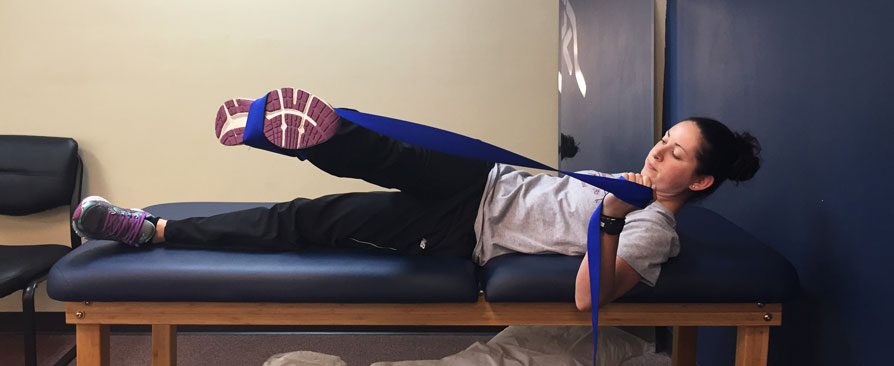
- Use a rope or belt to wrap around your foot of the affected leg
- Cross the affected leg over the other and pull your foot up and out until a comfortable stretch is felt along your IT band.
- Hold for 10 seconds and return to starting position
- Repeat 10-15 times, 1-2 times a day
- Lay on foam roller on the affected side
- Start with the foam roller just above your knee and roll up to your hip. Repeat for 3-5 mins
- Can perform 1-2 times a day
- Strengthen:
Hip Abduction Exercise
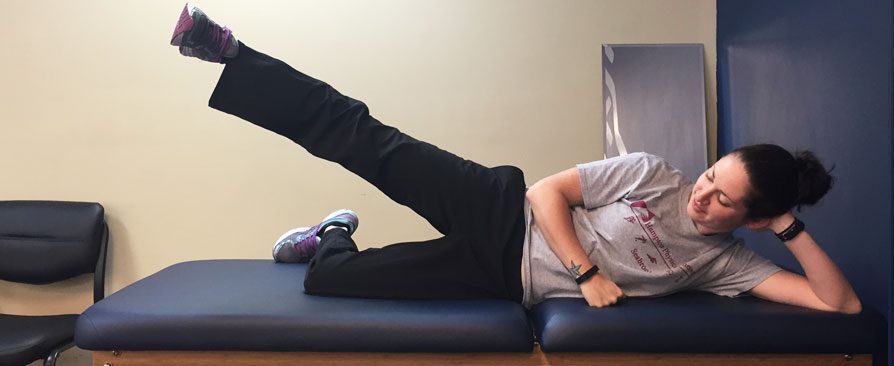
- Lay on your non-affected side with your bottom knee bent
- Keep top leg straight and raise leg up towards ceiling
- Return to starting position
- Perform 3 sets of 10 reps
Clamshell
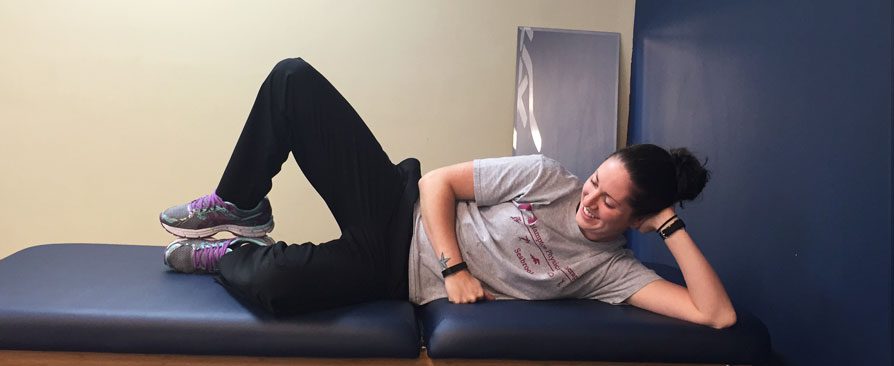
- Lay on your non-affected side with both knees bent over one another
- Keep heels touching while opening and closing your knees
- Perform 3 sets of 10 reps
Bridges
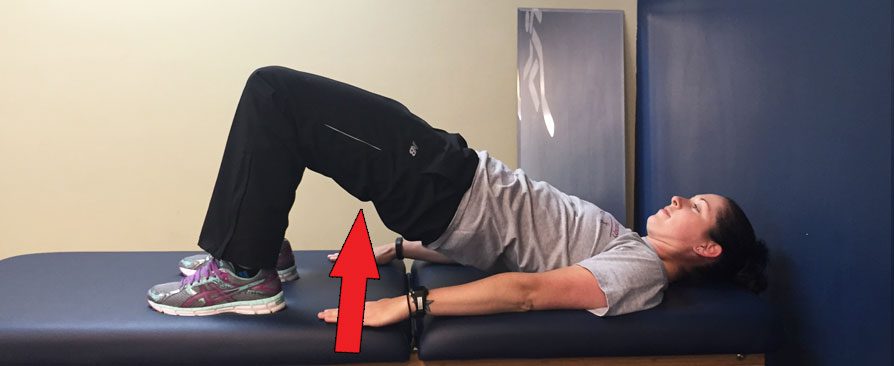
- Lay on our back with both knees bent up, feet on the floor
- Raise hips off the ground and return to starting position
- Perform 3 sets of 10 reps
Physical therapy is another option that can provide a wide variety of treatment treatments for this condition. Our team of physical therapists at Rye Physical Therapy can provide strengthening exercises, stretches, Graston technique for soft tissue mobilization, Kinesiotaping, modalities and much more to provide you with a great outcome for your symptoms. Feel free to call our office or visit https://www.HamptonPT.com for more information.
- Grau et al. The influence of matching populations on kinematic and kinetic variables in runners with Iliotibial band syndrome. Research Quarterly for Exercise and Sport. 2008; 79 (4): 450-457.
- Shamus J, Shamus E. Case report: the management of iliotibial band syndrome with multifaceted approach: a double case report. International Journal of Sports Physical Therapy. 2015; 10 (3): 378-390.
- Van Der Worp et al. Iliotibial band syndrome in runners, a systematic review. Sports Med. 2012; 42 (11): 969-992.
